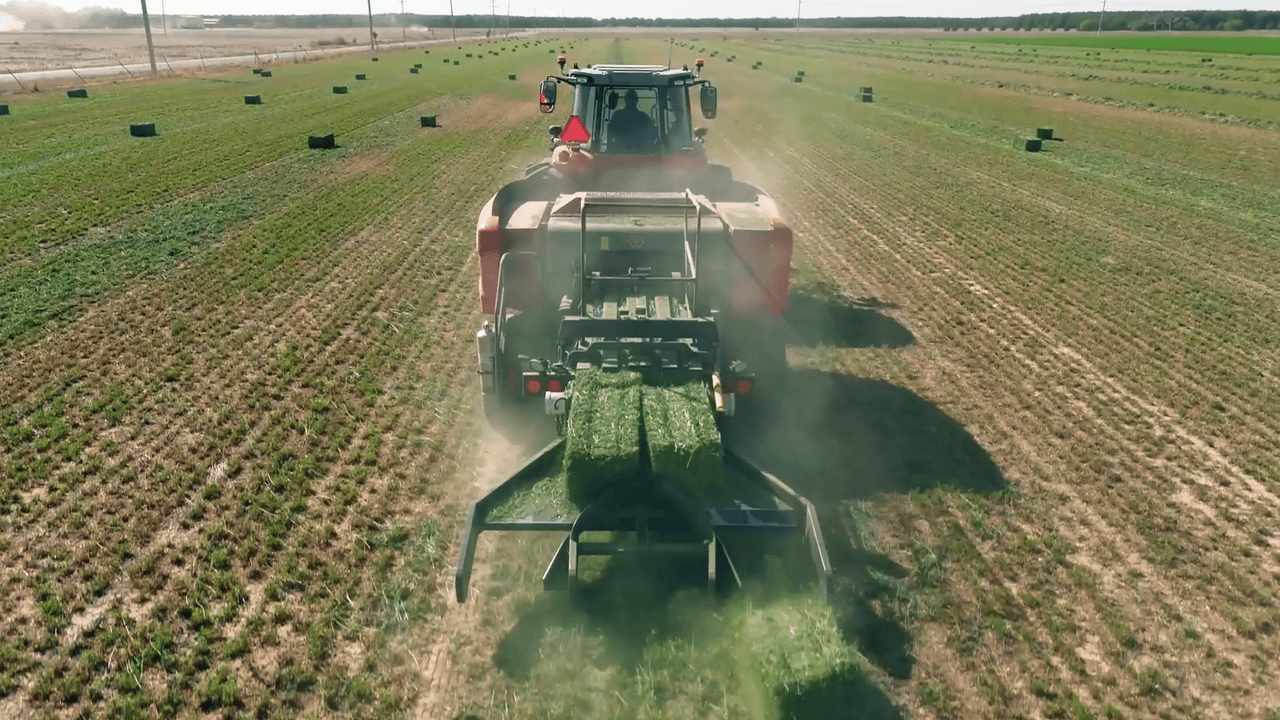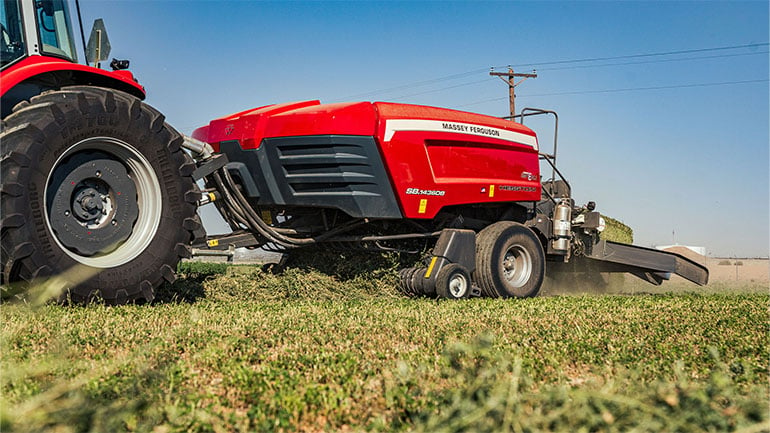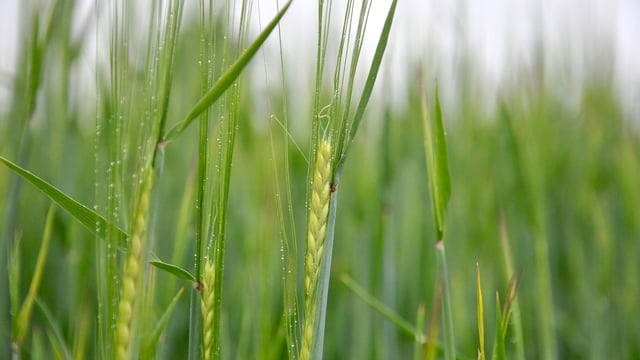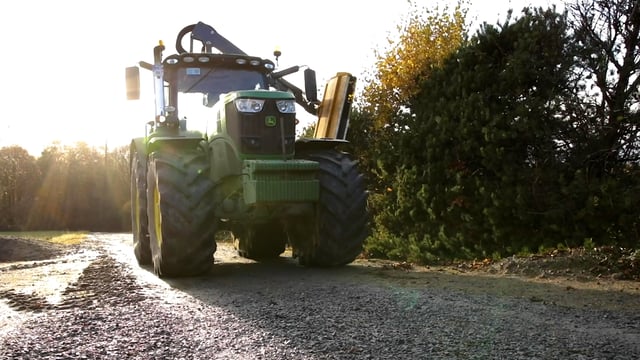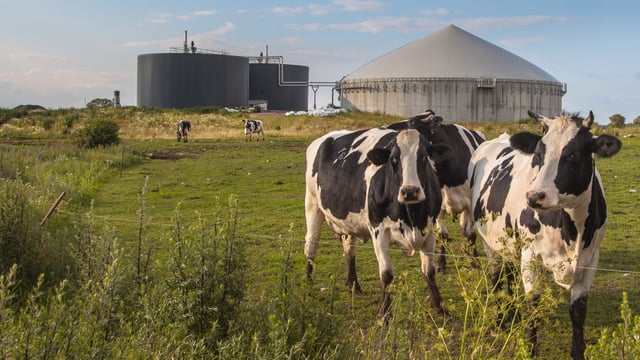Massey Ferguson introduces first twin channel baler
Massey Ferguson has developed a novel way of speeding up the process of small square baling; to produce two at a time from the one baler as it passes down the windrow.
The SB.1436DB small square baler is built with twin channels which share the same pickup and create two rows of bales per pass.
The company claim that the new design doubles the output of a single baler and so delivers greater field performance and far greater uptime than the traditional single channel machine.
It is a simple concept which has been executed by Hesston, the company's subsidiary based in Kansas in the United States, since 1948, when it first started making unloading augers for combines.
The idea behind the SB.1436DB is that increasing pressure from labour shortages, tight harvest windows, and demanding quality standards can be met by creating machines that increase the rate at which tasks are completed.
From the images released so far it appears that the baler has twin plungers operating on each side of a centrally-mounted gearbox with the drive to the knotters mirrored on either side.
Feeding the plungers is a 2.67m pickup, while Massey Ferguson's SimplEbale system automatically oversees bale density, weight, and dimensions.
The baler works at 90 strokes-per-minute and has a 56cm stroke length. It requires a 1000 rpm power-take off (PTO), a minimum of 120 PTO horsepower, and a recommended tractor weight of 5t or more.
To help keep the SB.1436DB baler working in the field, there is storage for 20 packs of twine, which is sufficient for 8,000 bales, an automated lubrication system for the knotters, and it is designed with easy access for servicing.
The machine has been developed with American forage crops in mind rather than European hay or straw, but there appears to be no reason why it should not be used for such, although it might not work with a flat eight or similar gathering system.

